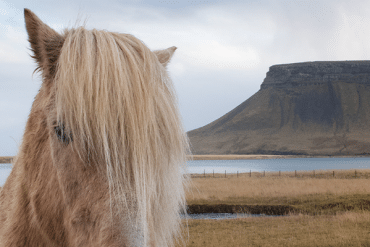The most challenging fishing on Nantucket happens in less than three feet of water.

Water rushes by in a blur of blues, browns and greens as Captain P.J. Rubin’s seventeen-foot Dolphin skiff skips across Madaket Harbor. His face is hidden behind a lightweight sun mask, giving him the look of a ninja assassin. “When stalking big fish in shallow water,” he tells me, “stealth is everything.” Rubin pulls his flat-bottomed boat onto a secret sandbar between the west end of Nantucket and Tuckernuck Island and then kills the engine. He raises the outboard from the water, jumps up onto a platform at the stern, and then pushes his boat into the shallows with a long pole like a gondolier. I step up onto the bow and look out upon the best kept fishing secret this side of the Sound. Welcome to the flats of Nantucket.

Flats are long, shallow-water sand- bars where schools of fish swim in search of food. A handful of captains on Nantucket use specially designed boats to navigate these flats in search of the island’s number one game fish: striped bass. Purists fish these waters strictly by fly rod and reel, catch and release. It’s all about the hunt, and there are few Nantucketers more hopelessly hooked on it than Captain P.J. Rubin.
Rubin is a lifelong Nantucketer who’s been fishing these waters since he was a kid, back in the days when stripers grew to enormous, seal- like sizes. This summer, he has gone pro with his passion for fly-fishing the flats by launching Rising Tide Outfitters. He only takes out friends or friends of friends. When the fishing is on, some of Rubin’s clients are known to hire private jets to get them on the water with him. He’s on a shortlist of guides who pole these flats exclusively, which also in- cludes Captains Jeff and Lynne Heyer of Cross Rip Outfitters. Rubin has agreed to take me out today under one condition: I don’t reveal where exactly we are fishing.
Standing at the bow with fly rod in hand, I pull out fifty-or-so feet of line from the reel and coil it onto the deck. When fly-fishing you cast the weight of the line, not the weight of the fly, which is pretty much weightless. This involves getting the line in the air with a series of false casts, waving the rod backward and forward overhead to let out more and more line in the air until the rod has enough bend in it to cast. The act is no less complicated than it sounds, and fly-fishermen are driven mad in the pursuit of the perfect cast.
But before I can even attempt a cast, a fish must be spotted. This is called sight fishing. From his platform, Rubin pushes his five-hundred-pound skiff over a foot of water and scans for stripers. Unlike in the tropics, Nantucket’s flats are murky and dotted with beds of eelgrass, rocks and seaweed that quickly start to look like fish. Through polarized sunglasses, I search the water until my eyeballs tear up and throb. The wind is whistling from the west. Gulls are screaming from the shores of Tuckernuck. The mood is intense and focused on board.
“Okay, I got one. Two o’clock. Four boat lengths away. Mov- ing right to left,” Rubin rattles off. I look to my right, imagining how far “four boat lengths” would be, and pierce the water with my eyes, but see absolutely nothing. “You got her?” I continue to look hard, but still see nothing. The water is a psychedelic mirage of undulating seagrass. “She’s coming across twelve, now eleven—oh she just turned to us!” My heart pounds in my ears. The rod feels heavy as a cinderblock in my hand. “Thirty feet out—you got her?”
Finally, I spot a gray shadow slinking over the sand. It’s go time. This is why I’m here. Let’s fish. I raise the rod and begin to false cast, but a massive mess of line swarms in my hands. The knot balls up in the eyes of the rod and I can’t cast. My opportunity is blown.
My shot botched. The fish is gone. I am devastated. “Don’t worry about it,” Rubin consoles, we’ll get you another one.” He pushes off to the next flat.
We drift on and on over the flats, a seemingly endless quilt of thriving marine life. Lady crabs scurry out from eelgrass beds and bury themselves in the sand. The current streams fast over the shallows and then dumps into deep, green troughs. The sun hangs swollen over- head. In the intense silence, I begin to feel like the last per- son on earth. I am worlds away from the hustle and bustle of downtown Nantucket. I might as well be fishing off the shores of the Galapagos.
Suddenly, the wail of an engine shatters the tranquility. I look to my right to see a Grady-White center console ripping across the flats. “Unbelievable,” Rubin mutters. “Watch this.” The boat screams into the shallow water and runs aground. “He’ll be stuck there till high tide.”
The boat’s operator raises the engine slightly and slams the throttle. A boiling mess of sand, seaweed and water explodes out the back of the boat. “Well, that spot’s blown,” Rubin says. “There won’t be a fish there for the rest of the day.”
The unfortunate trade-off of keeping Nantucket’s flats a se- cret all these years is that most boaters have absolutely no idea how to navigate these waters, nor do they know the etiquette of fishing them. Every day, Rubin and his fellow guides pull their hair out over weekend warriors who motor up onto the flats, throw an anchor, and begin blind cast- ing. As with all marine ecosystems, the flats are fragile, and Rubin is worried that if boaters continue to mistreat them, Nantucket’s most exciting fishing will end up like the giant stripers of his childhood—a thing of the past.
“Ok, two o’clock, three boat lengths away,” Rubin instructs. I turn and look hard. “Turn to your right.” I continue to look. “Your other right,” he says. Oh. “Start casting, I’ll let you know where to lay it down.” The wind has merci- fully calmed as I raise my rod. I still can’t see the fish, but I do what the captain orders and begin to cast. “More to your right,” he instructs. “Ok, good, now cast as far as you can.” I do. “Nice! Strip in the line a bit. She sees it. Once more—strip. Leave it. Strip! Leave it. Leave
it. She ate it! Set!”
I yank hard on the line and the rod bends instantly. The reel screams out and I answer with one of my own. Rubin drops anchor and jumps down from his platform. He’s as excited as I am. “Oh man, look at her go!” We’re all smiles. The striper rips through the water fighting for its life, but I don’t know who’s more hooked—me or it?






